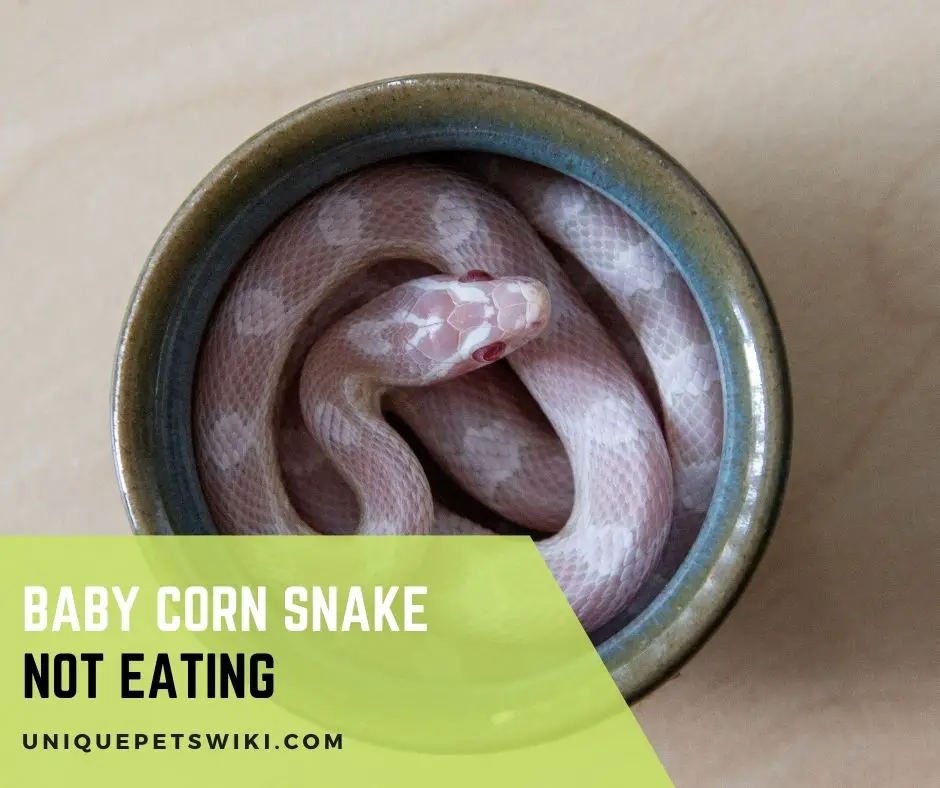Many baby corn snakes have a reputation for not eating and can be difficult to feed consistently in captivity. However, if your baby corn snake that is not eating is also losing weight, then it could be a cause for concern.
Many factors cause poor appetites in baby corn snakes. If you’re looking for the exact reasons and probable causes behind this lack of appetite, then read on, we have all the information you need.
Contents
Why is Your Baby Corn Snake Not Eating?
A new baby corn snake will not eat while it adjusts to its new environment. Sometimes, corn snakes don’t eat if they are being observed or when the food size is too large, or if the food is stale or unappetizing to the snake. Let us consider each of these in detail:
Your Snake is Adjusting to The New Environment
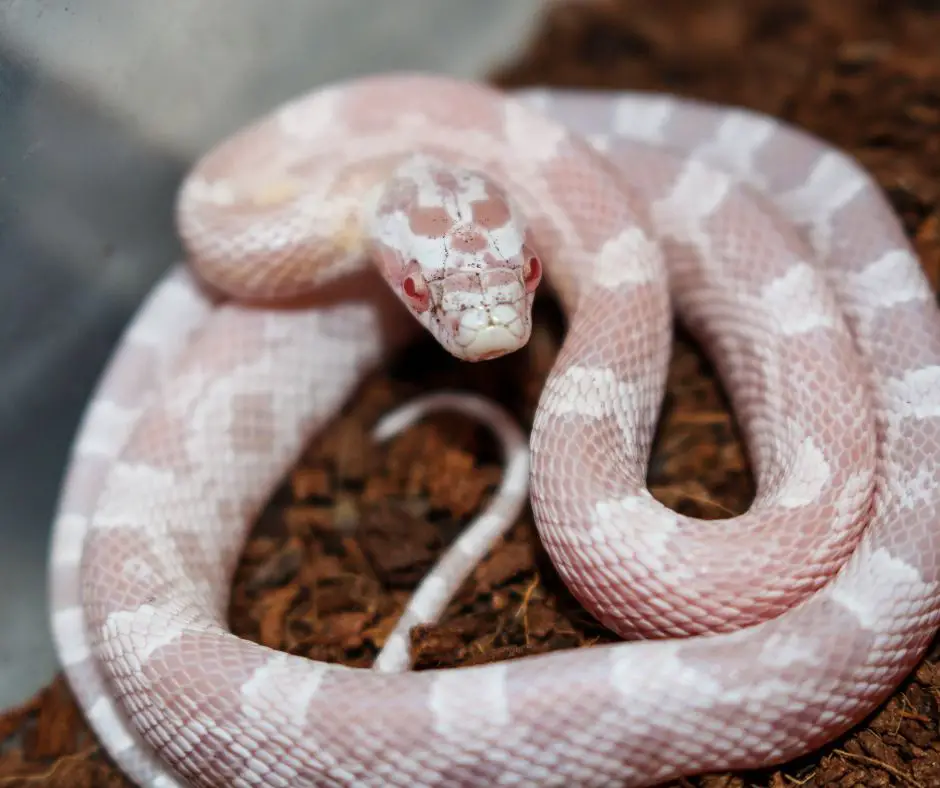
A newly acquired baby corn snake won’t eat because it is still adjusting to being held captive. Most snakes take a period of 5 to 7 days to adjust and settle down in their terrarium.
Worry not, your corn snake is capable of staying hungry for this period. Most snakes also start eating within a few days. Just make sure not to handle it too much.
The Food Size Is Too Large
This is another reason why a baby corn snake won’t eat. Most snake species, including the baby corn, have unique jaws that are capable of swallowing prey larger than their heads.
However, if your pet regurgitates its food or simply refuses to eat it, then the feed may be too large for it to eat comfortably.
When it comes to feeding snakes, follow the thumb rule of ‘selecting food that is slightly larger than the thickest part of the snake’. Most fully-grown baby corn snakes reach a length between 4 and 6 feet (48-72 inches) and are about 1-inch in diameter.
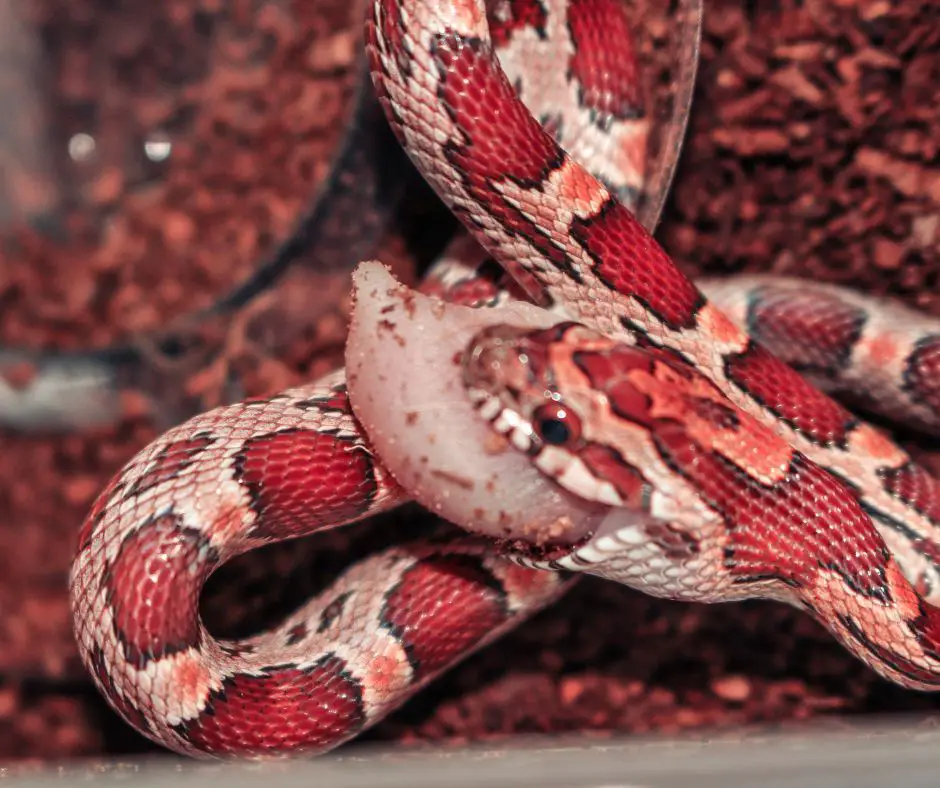
Based on this rule, below is a table showing the general guidelines about the size of food to feed a baby corn snake of different weights:
| Snake Age | Snake Weight | Size of prey | Frequency |
| Hatchling | 6-8 grams | Pinky rat (baby rat) of 1-3 grams | Every 5 days |
| 6 months | 25-30 grams | Fuzzy(juvenile rat) of 7-11 grams | Every 7 days |
| 12 months | 35-100 grams | 1 Adult mouse/hopper or rat pups of 10-15 grams | Every 7-10 days |
| 24 months | 900 grams | 1-3 adult mice/hopper/rat pups of 45-80 grams | Every 7-10 days |
Unpalatable Food
Baby corn snakes might also refuse food if they don’t like it. Fussy snakes reject food if it is malodorous, or not warm enough. Some snake foods are defrosted in hot water and that can impact their flavor and texture.
To avoid this, you can try the following:
- Defrost and thaw the frozen prey naturally
- Ensure that the food is of the right size – no more than 1 ¼ of the snake’s girth
- If the rats or pinkies are large, cut them in half before feeding.
- To make the food more flavorful, warm up the pinky/rat using a hairdryer.
Baby Corn Not Always Hungry
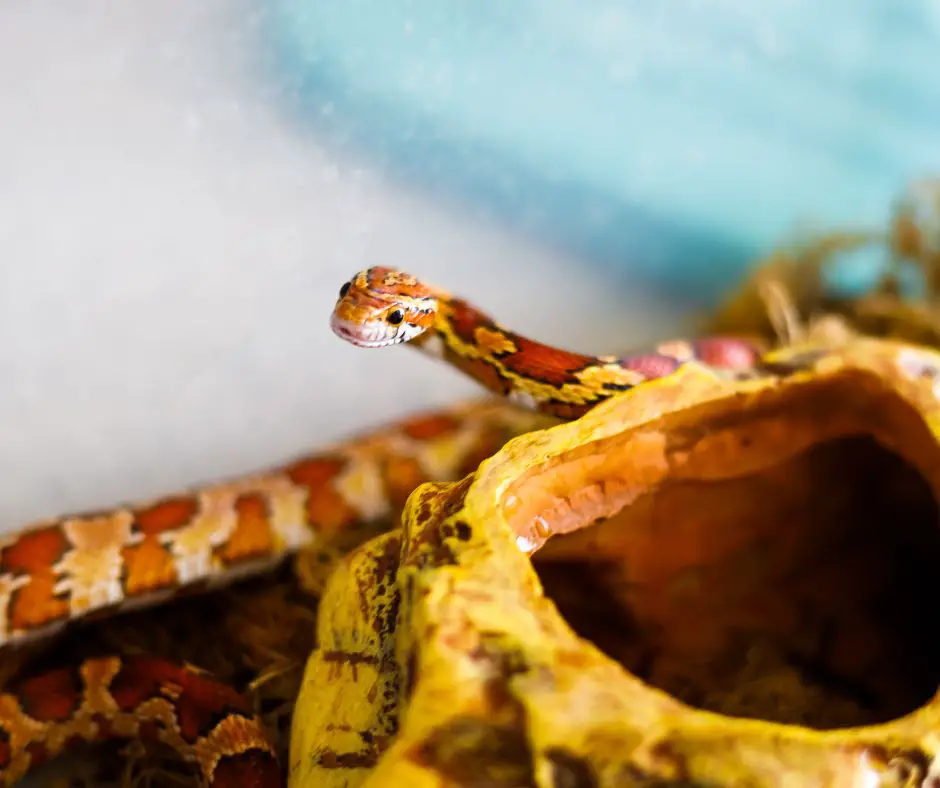
It is very important not to over or under-feed your baby corn snake. However, it can be challenging to know when the snake is and isn’t hungry. Here are some questions to consider in order to assess whether your snake isn’t hungry at all:
How to Tell if your Snake is Not Hungry?
Your baby corn snake won’t be tempted to even come near the food. It might also remain unmoving in a place and not poop. Also, most snakes like to follow a feeding schedule. So, if your snake’s feeding schedule usually comes every 7 days, it won’t eat before that time.
How to Tell if your Snake is Hungry?
A hungry baby corn snake might show the following signs:
- Being more active than usual
- Prowling in front of the tank
- Focusing on you when you come near its tank
- Hunting at a similar time day or night
- Flicking out the tongue more often.
How Often Should You Feed Your Baby Corn Snake?
It is best not to overfeed your baby corn as that could lead to many health issues. Most snakes need feeding every 7 days. Younger snakes need more frequent feedings as they grow – once every 5 days.
Your fully-grown caby corn could eat one pinkie every 7 days.
Your Baby Corn Snake Is Too Cold
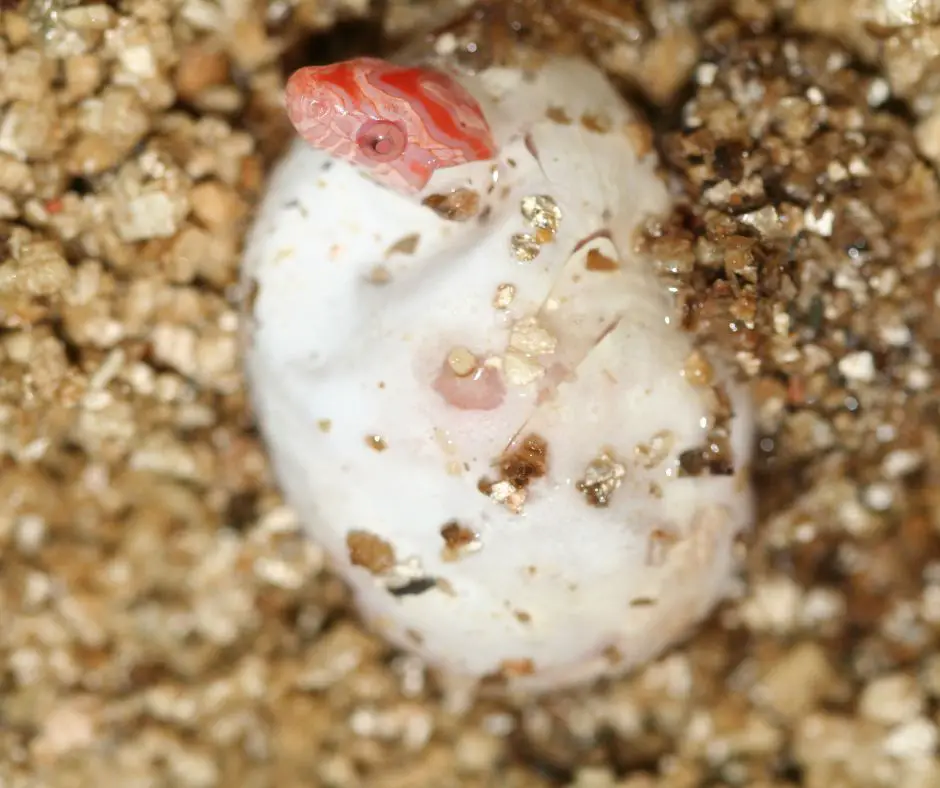
Baby corn snakes, like all cold-blooded animals, need an optimum environment to stay healthy. A warm temperature is very important to ensure a healthy appetite in your snake.
If the snake is kept in cold conditions, it will not have a healthy appetite. All of its energy will be diverted to keep itself warm. It will also have slow or sluggish movements and will appear lethargic.
At temperatures below 75 F, your snake won’t be able to digest its food. Due to this, the swallowed food will rot inside its tummy leading to all kinds of health issues.
Your Baby Corn Snake Is Stressed, Nervous, or Anxious
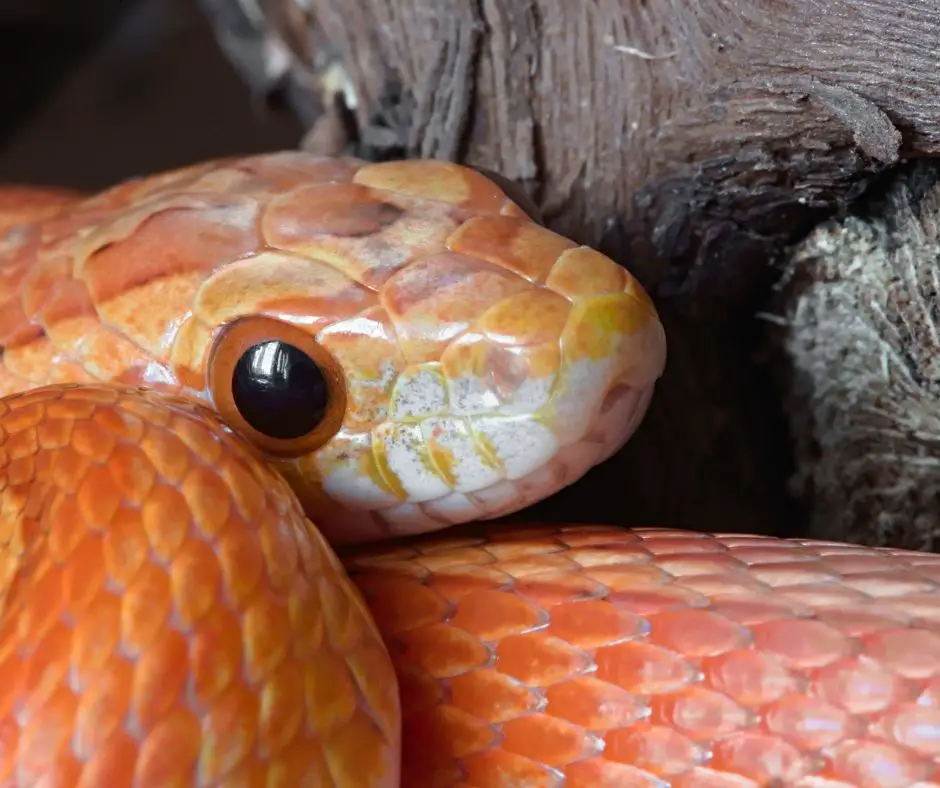
One of the primary causes of a lack of appetite in baby corn snakes is stress. Most snakes are creatures of habit; they do not like changes in their routine. Any change from daily routine or environment could make your pet anxious and high-strung.
If your baby corn snake is new, then it may be stressed due to the move. As mentioned before, give it a week to adjust.
However, if your snake is an old resident and still appears stressed, then try to assess the reason behind it.
- Have you moved the cage to a new location?
- Have there been any changes in lighting or temperature?
- Perhaps you are handling your snake too much. Too many people might be playing with or touching the snake.
All these factors can cause tremendous stress in your baby corn.
Pre-Shed Conditioning
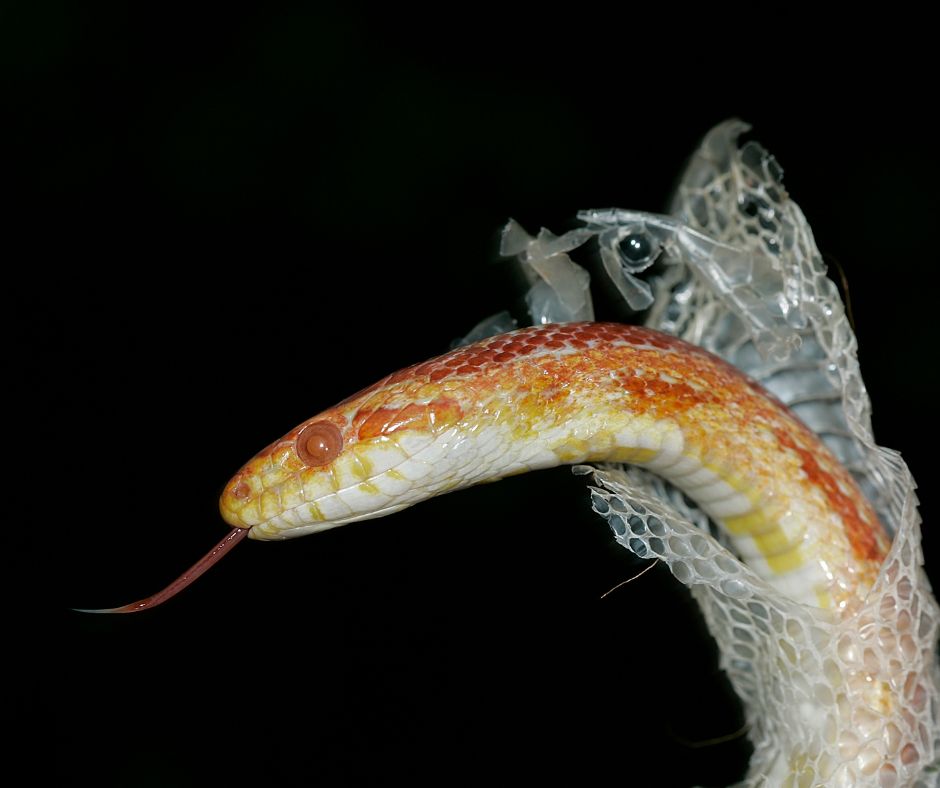
Almost all snakes stop eating prior to molting or shedding. In fact; one of the main signs of molting is a lack of appetite and most corn snakes stop eating for days before the actual event.
Shedding impacts a snake’s dexterity and vision so even small prey can become dangerous for it. This is the reason why they stop feeding in the wild. The same behavior is seen in captive snakes.
Juvenile and hatchling corn snakes shed every 4-6 weeks while adults need to shed every 3 months or so.
Here are some more signs your snake is ready to shed:
- Pale skin – your pet’s scales might look lighter than normal. They may also appear ashy and dull.
- Changes in eyes – snake’s eyes become milkier before shedding. They may develop hazy blue eye caps.
- Lethargy – your pet might not move much as it conserves all its energy for the molting.
What to do
- Lack of appetite before shedding is completely normal.
- Leave your pet alone. Simply mist its cage and change its water.
- If your pet is having a hard shed, you could help it out using certain shed-easing products. We recommend Zilla’s Shed-Ease Reptile Bath. It helps the skin slide off your snake.
Digestion Problems or Illness
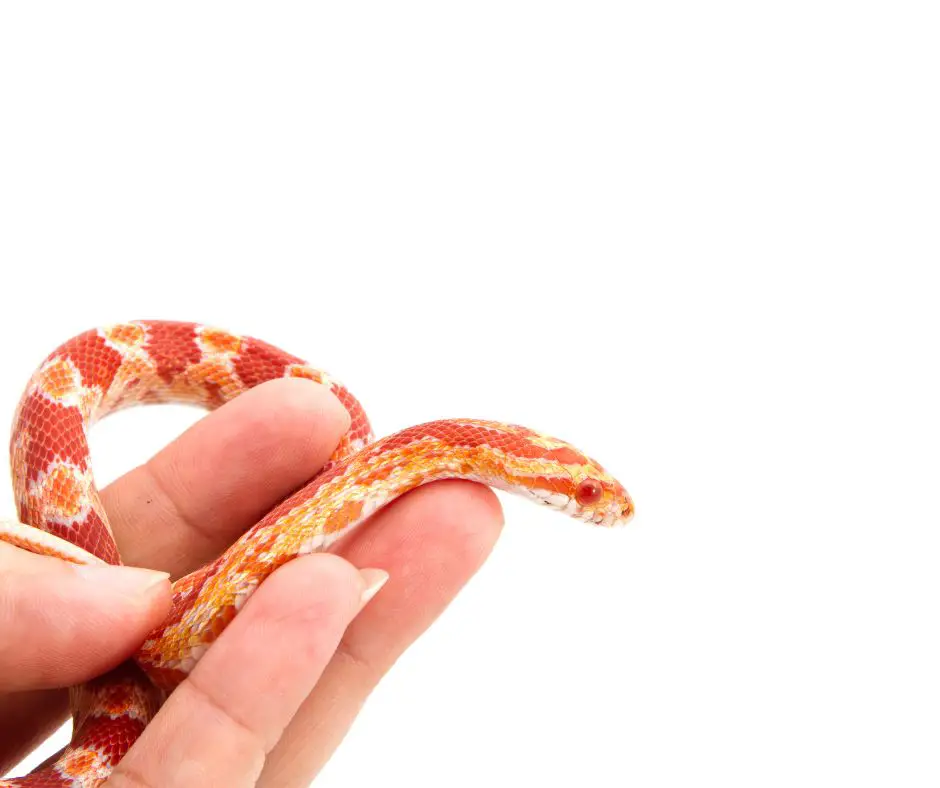
If the above factors are not the cause of your baby corn snake not eating, then it could be sick. Several diseases could cause appetite changes in snakes, the main ones are mouth rot and respiratory issues.
Mouth Rot
Also known as infectious stomatitis, mouth rot impacts a snake’s mouth and is caused by various species of bacteria. The symptoms of mouth rot are
- Poor appetite
- Pus or discharge oozing from the mouth
- Dead tissue around the mouth
- Red, inflamed mouth and nose.
Respiratory Disease
This causes breathing difficulty in the snake and could occur due to bacteria in conjunction with mouth rot. The signs of respiratory illness are
- Excess mucus
- Wheezing or gurgling sounds
- Open mouth breathing.
- Lack of appetite.
What to do
Treatment for both, mouth rot and respiratory illness include antibiotics given by injection or through the mouth, or via inhalation. Please see your vet right away.
How Long Can a Baby Corn Snake Go Without Eating?
Snakes are cold-blooded creatures. So, they don’t need too much energy from their diet. Most baby corn snakes in captivity can easily go without food for a week. In the wild, Corn snakes are known to go without food for several weeks even months.
Ideally, a pet baby corn snake should not go without food for more than a week. This is because, in the absence of food, they tend to use their internal fat storage for energy but baby corn snakes have very low internal fat storage.
Therefore, long-term abstinence from food could cause your snake to deteriorate or waste away.
What Do You Do If Your Baby Snake Won’t Eat?
If your baby corn snake has not eaten for a long period of time (more than a week), then you need to take the following steps to remediate the situation. Here is what you can do:
Ensure Optimum Environment
Check the snake’s enclosure settings for optimum light, humidity, and temperature. The ideal daytime temperature for corn snakes should be between 75 and 82 F and there should be a warmer basking area between 80-85 F.
Ideal nighttime temperatures can be between 67 to 75 F. The humidity level for this species of snake is 30-70% RH.
Exo Terra Thermometer for Reptile Terrarium
- For monitoring reptile terrarium temperature levels
- Easy to mount on smooth surfaces with adhesive dot
- Clear analog dial display makes it easy to read
- Measures air temperature in both Celsius and Fahrenheit
Last update on 2022-12-29 / Affiliate links / Images from Amazon Product Advertising API
Make the Meals More Palatable
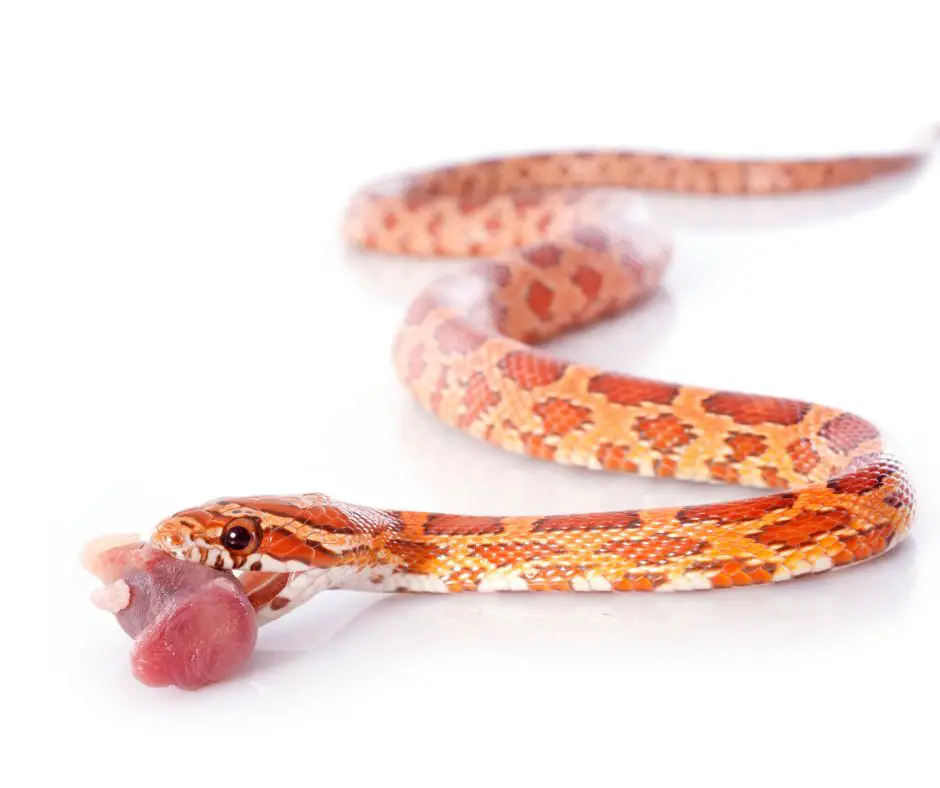
Ensure that the food you feed your snake is ‘tasty’ and appealing to it. Here are some tips:
- Warm the food using a hairdryer so it isn’t too hot or too cold.
- Defrost the frozen food by placing it to thaw at room temperature. Do not keep it in hot water as that could affect its taste.
- Move the food in the snake’s enclosure to give it the ‘appearance’ of live play. If possible, dangle the mice/pinkie near the snake’s head (or its nostrils). This can entice the snake to get into the predatory mode which can whet its appetite.
- Give the prey a ‘delicious’ flavor and aroma by rubbing it against some other scent or such as a mouse scent.
- Try switching to lizards instead of the usual mice or rats.
- Provide your snake with privacy – many corn snakes dislike being observed while they are feeding.
Using a Pinky Pump to Force Feed
If you see your snake wasting away, it may be time to force feed it.
Pinky pumps liquefy the feed into a more digestible form. It is ideal for use on corn snakes that are bored, fussy, or simply dislike the usual feeds. The pumps, when used properly, convert the rat meat into a more appetizing form and could whet the appetite of a sick snake.
To use
- Thaw the pinkie mice.
- Cut it into small pieces, the smaller the better.
- Add the pieces into the pump’s glass part.
- Select the appropriate nozzle for the pump based on your snake’s size.
- Connect the nozzle to the pump’s body, depress, and pull back the pinkie pump’s plunger once.
- Hold the snake and insert the nozzle into its mouth. Slowly press the plunger.
- The mouse segments will get liquified due to the pump’s sharp blades and go into the snake’s mouth.
10cc Reptile Snake Feeder Feeding Pinky Pump Syringe Dosing Tool Veterinary
Last update on 2022-12-29 / Affiliate links / Images from Amazon Product Advertising API
Best Tips to Feed a Corn Snake
The following tips can also help feed your fussy corn snake:
- Try feeding live mice or rats. This can help your snake feel excited at chasing prey – just as it does in the wild.
- Defrost and thaw the frozen rat prior to feeding. Warm it up so it can mimic the live feed. Dangle the food near the snake’s nostrils – you can use tweezers for the same.
- Provide water as well – make sure the bowls are clean. Also, provide water for your snake to soak as needed.
- Ensure privacy for your snake to feed in. Provide a hide box.
- Maintain optimum temperature and humidity.
PENN-PLAX Reptology Shale Scape Step Ledge & Cave Hideout
- REALISTIC ROCK FORMATION: Highlighting a rough, picturesque display, the Reptology Shale Scape Step Ledge & Cave Hideout is a must have for pet owners looking to add a beautiful and functional piece to their aquarium or terrarium. This piece is perfect for small reptiles, newts, salamanders, crayfish, axolotls, snakes, territorial fish, and more!
- GREAT FOR CLIMBING AND BASKING: This Shale Scape is not only decorative, but is also purposeful! If your pet reptile or amphibian loves to climb, this piece will be their next mountain to conquer, as they rest peacefully on the top basking platform, regulating their body temperature as they see fit.
- NATURAL HIDING SPOTS: With 4 entrance and exit holes, the Reptology Shale Scape Step Ledge & Cave Hideout offers several ways to climb, slither, and swim around! In addition to reptiles and amphibians, this piece provides a great swim through or hiding spot for axolotls, fish, and crustaceans, such as crayfish and shrimp.
- MADE OF SAFE AND DURABLE RESIN: Our Shale Scapes are inspected with your pet’s safety in mind, and are safe for freshwater and saltwater aquariums. The resin has a sturdy base: you don’t need to worry about it floating around once you place it underwater.
- MEASUREMENTS: Overall = 11” (W) x 8.25” (D) x 4” (H)
Last update on 2022-12-29 / Affiliate links / Images from Amazon Product Advertising API
FAQs
How long does it take for a baby corn snake to eat?
Baby corn snakes can take almost 2-3 days to completely digest their feed. This rate of digestion depends on the snake’s health as well as the ambient temperature.
How many pinkies should I feed my baby corn snake?
Corn Snake Hatchlings need to eat 1-2 pinkies per week.
How often do you feed a baby corn snake?
Feed a hatchling once every 5 days, and juveniles and adults can be fed once every 7-10 days.
How do I know if my corn snake is hungry?
Corn snakes that are hungry tend to prowl and move about the cage restlessly. They might also flick their tongues constantly.
Conclusion – Baby Corn Snake Not Eating
A pet baby corn snake should not go without food for more than a week. This is because, in absence of food, they tend to use their internal fat storage for energy. This could lead to weakness and deterioration.
You could try warming up its food. Alternatively, feed your snake some other tasty live food by dangling it closer to its nostrils. You must also ensure an optimum environment with proper light, temperature, and humidity. If your pet continues to abstain from feeding, you might want to check with your vet.
